During the Golden Week holidays, our WeXpats Thai member visited Shizuoka Prefecture (静岡), a famous organic green tea production area in Japan, as a volunteer to help pick tea leaves. She tells us of her unique experience.
Note: Translated from the original Thai article here.
Table of Contents
- Shizuoka Prefecture for Japanese Green Tea
- Organic Green Tea Plantation in Shizuoka Prefecture
- Experience Tea Picking at a Homestay in Japan
- To Close
Shizuoka Prefecture for Japanese Green Tea

First things first, some background knowledge about Shizuoka.
静岡 (Shizuoka) Prefecture is regarded as one of the best places for green tea in Japan. The Prefecture is also home to Japan’s iconic Mount Fuji.
Green tea generally thrives in warm, rainy climates. Shizuoka Prefecture and the Tokai region experience a warm climate throughout its four seasons due to the influence of the Kuroshio Current flowing through the Kumano Sea and the Enshu Sea. This makes Shizuoka’s weather extremely well suited for growing tea, producing the highest quality tea in Japan for a long time.
There is a saying that good quality leaves must come from good climate, soil, water, and most importantly, care from good farmers. In addition, during the process of harvesting tea leaves, only select tea leaves of the same size. The first harvest of tea leaves of the year, picked in spring (April-May), are called 一番茶 (ichiban cha) by the Japanese.
Writer's Pick
Organic Green Tea Plantation in Shizuoka Prefecture
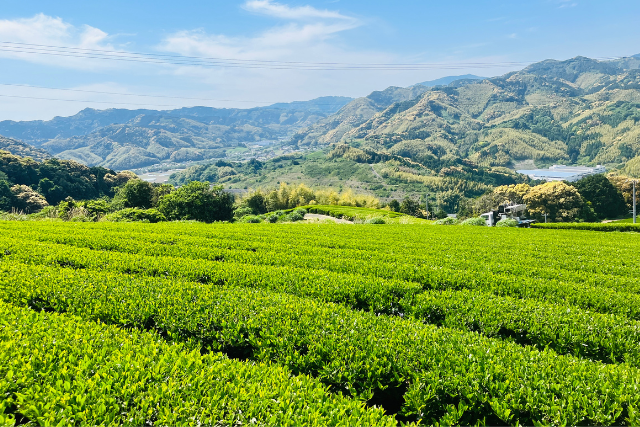
There are many green tea plantations in Shizuoka Prefecture. This time we will introduce NATURALITEA. An organic green tea plantation with a history of over four decades. The founder, Toshiaki Kinezuka’s philosophy that drives the business is,
A good farmer knows that to produce good crops, one must first develop good soil.
Thus, the taste of good organic tea is made half of tea leaves and half of the hearts of their farmers.
The balance between agriculture and nature is a delicate thing. NATURALITEA is careful to maintain this balance of nature, letting predatory insects such as spiders prey on grasshoppers for pest control, while attracting birds and reptiles to help improve biodiversity in the tea fields. This is a farming method that has been practiced for thousands of years, before using fertilizers and other chemicals became predominant.
Unfortunately, this method has been largely abandoned in pursuit of producing as much tea as possible with the least amount of time and labour. NATURALITEA does not succumb to the pressures of the industry. Instead, it chooses to return to its agricultural roots along with its 10 family farms in the same region, contributing to create an environment conducive to growing the highest quality of organic tea.
As a result, the organic tea produced by NATURALITEA is of very good quality and has received international recognition.
Experience Tea Picking at a Homestay in Japan

Getting to NATURALITEA Tea Plantation from Tokyo takes over 5 hours by regular train and bus. You will need to get off at the nearest station, Fujieda Station (藤枝駅). At the station, take the Yuraku Line bus at Bus Stop No. 3 to Hongo Fumonji-mae (本郷普門寺前) bus stop.
Since this area is in the outskirts, restaurants are scarce so have your supplies ready. Buses are infrequent as well, so plan your travel schedule well.
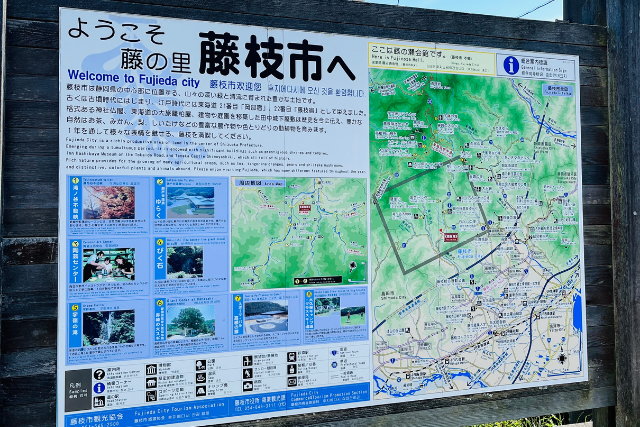
When you arrive at Fujieda Station, there is a welcome sign to Fujieda City that introduces many tourist attractions.
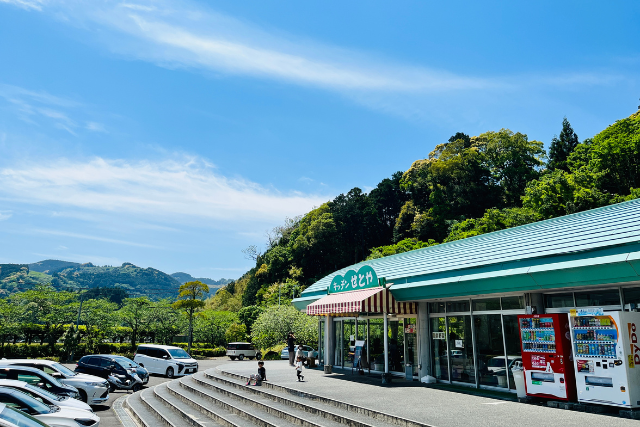
At Hongo Fumonji-mae. We had not eaten, so we went looking for the nearest restaurant. There was only one restaurant that was thankfully still open during Golden Week.
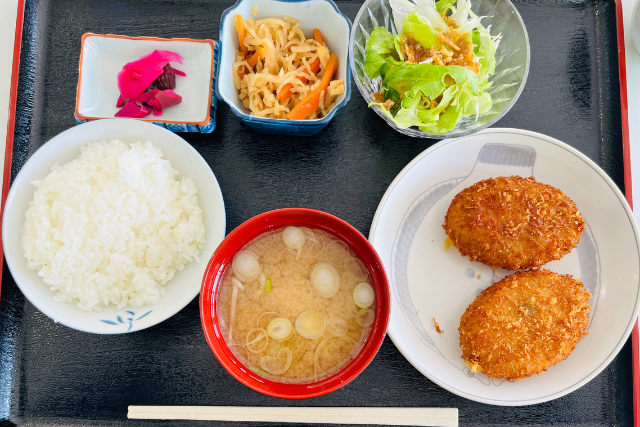
The recommended dish is croquettes, which comes in a set meal like this.
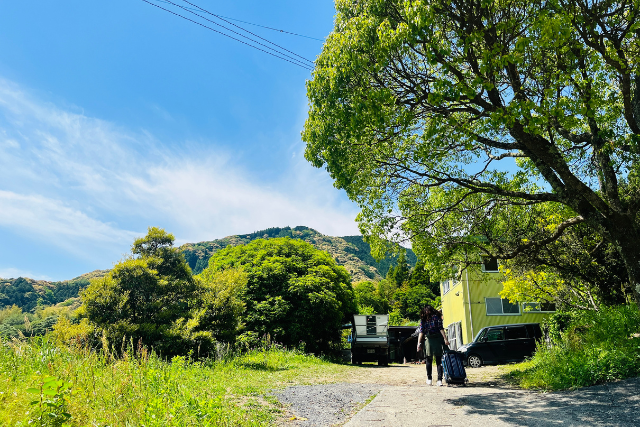
After eating, we walked to the accommodation which is a kilometer away. It was a tough walk but we were in good spirits. The beautiful view helped make the walk more comfortable until we reached the accommodation.
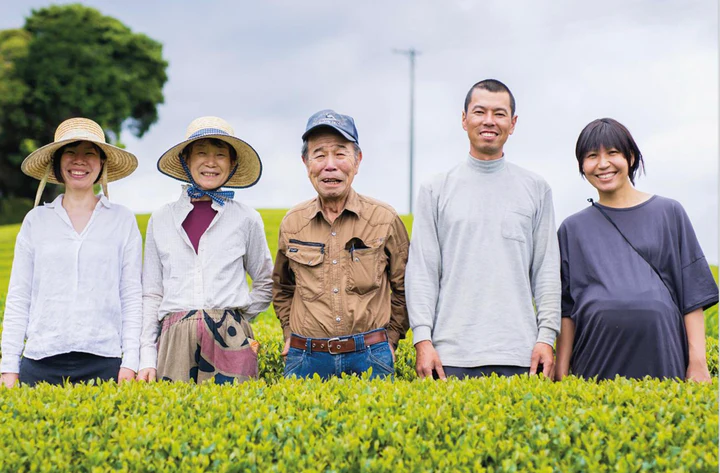
Source : https://naturalitea.com/
As soon as we arrived, we met Tamiko-san (far left), the farmer’s daughter who is skillful in making tea - their product. She asked us if we wanted to go to the tea plantation together, “Do you want to go together?” At that time, I answered without thinking that I would go!
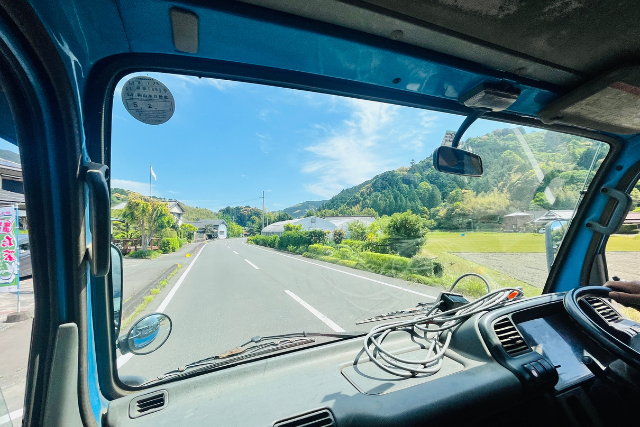
After we put our things away, a “chariot” came to pick us up and bring us to the tea plantation.
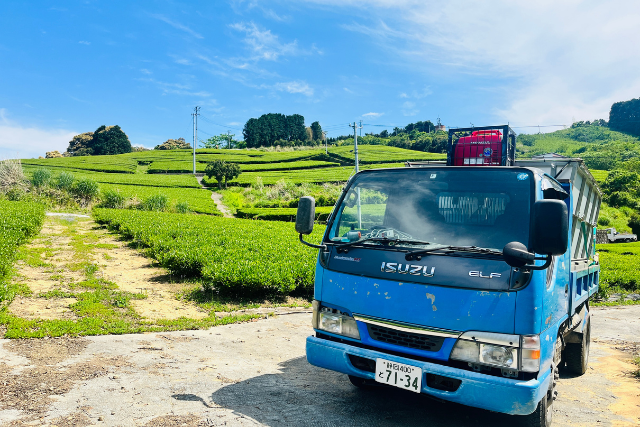
This blue truck, that I nicknamed “Aoi-chan”, is the vehicle we used to collect all the tea leaves to bring to the factory.
※ 青い (Aoi) is “blue” in Japanese, “-chan” is a suffix that can show endearment.
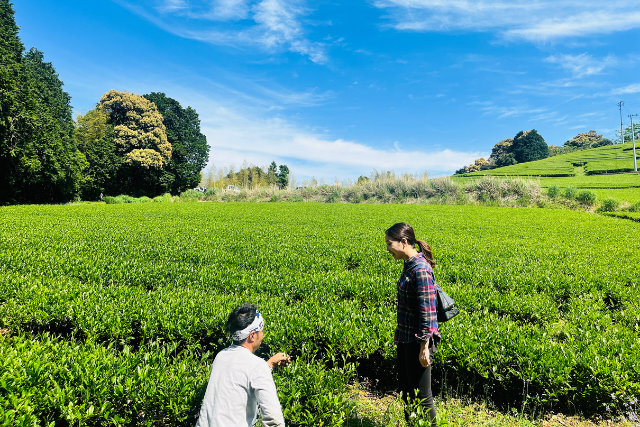
Before the tea picking started, an instructor taught us what to do.
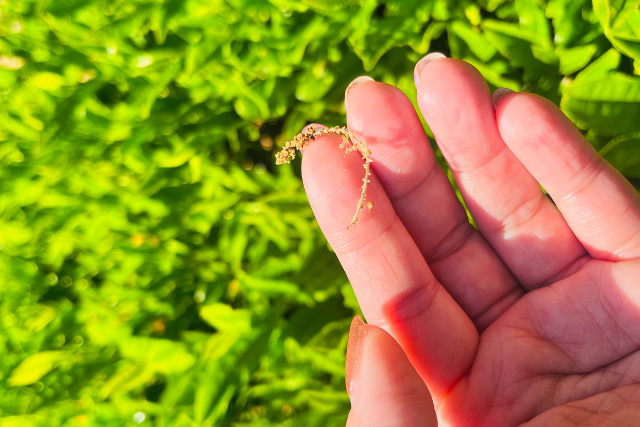
We need to remove unwanted substances such as grass, weeds, and pollen that have flown onto the tea leaves before using the cutter. Because if these things get mixed in with the tea leaves, it will make the tea taste bad.

Let’s start work!
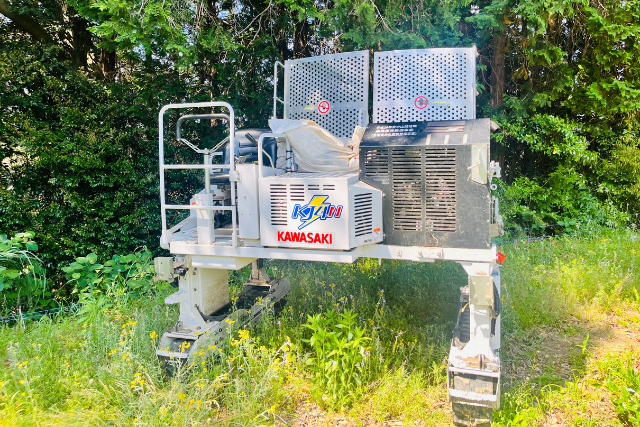
This is a tea cutting machine, a huge labour saver. We were also given the opportunity to drive it! It’s very fun, like driving a toy car in an amusement park. Thank you Kazuki-san for letting me test drive it ^^.

A bag is attached to the back of the machine. Drive along the tea plants row, and the machine will cut the leaves and release them into the bag.

After cutting for a while, the bag is full and needs to be replaced with a new bag.
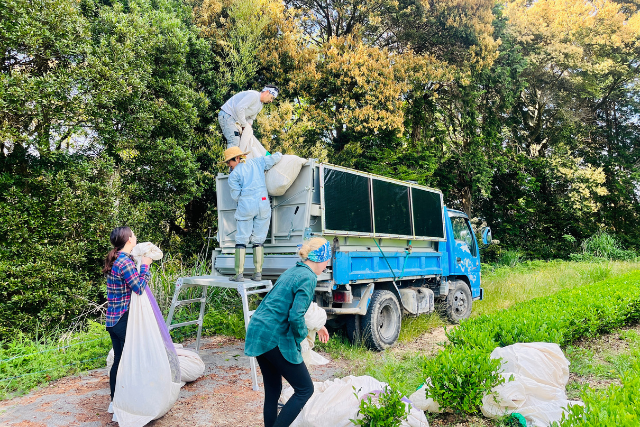
The bags that are full with tea leaves are loaded onto Aoi-chan. With so many tea leaves in a bag, it became unexpectedly heavy.

After the truck is filled with tea leaves, it will be driven immediately to the factory for steaming, which is an important first step of the process to make Japanese green tea. Oxidation prevention so the leaves retain their green colour, the steaming time also has a significant effect on the flavour, aroma, and the appearance of the product.
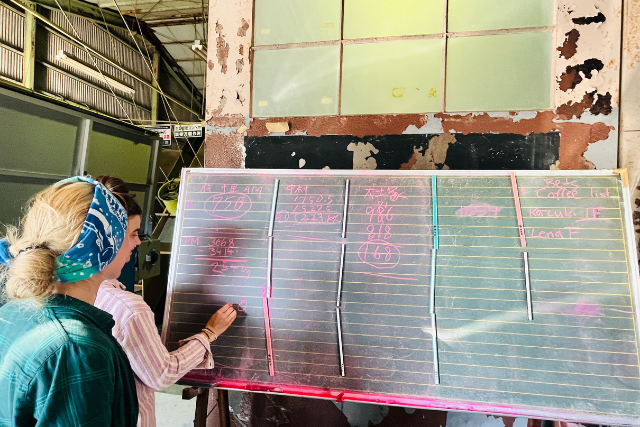
After that, the tea leaves must be weighed. We calculated how many tea leaves we collected today. Today, we collected 1,010 kilograms, which must be written on the board.
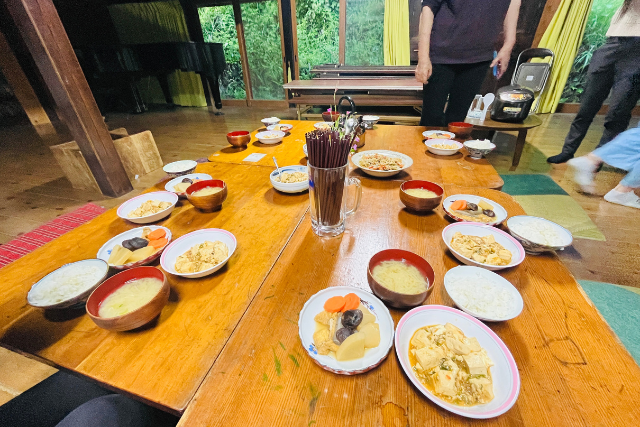
Our work starts at 8 am and finishes around 5 pm. This trip, our activities were the same, picking tea for 2 days. After work, we return to the homestay where food will be ready for us. Our meals were vegan because Jenny, a fellow German volunteer, is vegan.
Thank you Michiyo-san for every meal you prepared during my stay there.
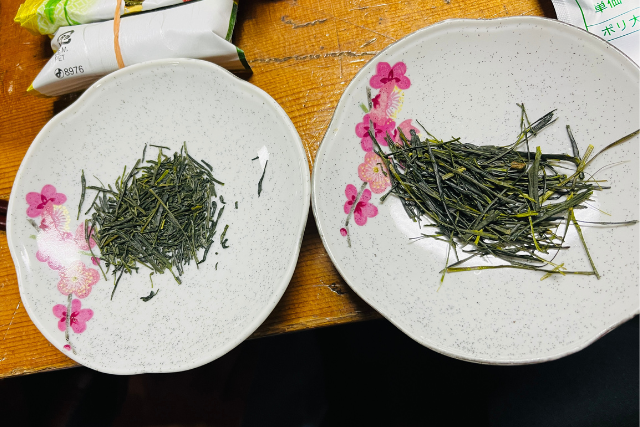
After finishing our meals, it’s time for tea. Lots of tea. Sipping tea, lessons about tea, and stories about Japanese tea that are worth writing about. It was so much fun, anyone who likes tea must come here.
On the left is tea that has been completely processed. On the right, the tea leaves are longer, this is raw tea called 荒茶 (aracha).
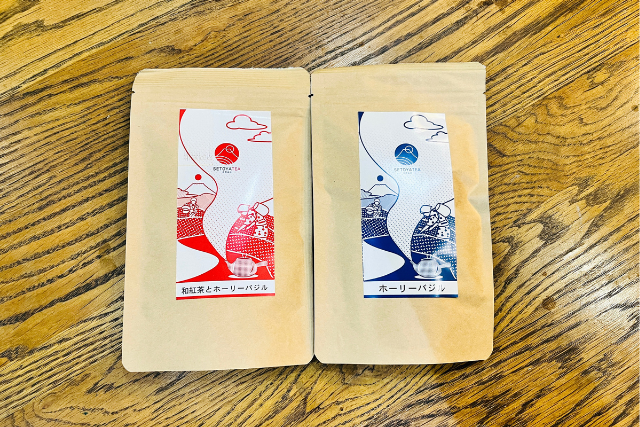
This is tea mixed with basil that is made by Tamiko-san. Honestly, I am very confused about how basil can be mixed with tea. I did not expect much from it, but after trying the Japanese black tea mixed with basil (red bag), I can tell you that it is an unbelievably good combination. I liked it so much I bought some back to have at home. I recommended it for Thai tea entrepreneurs. Please give it a try.

After chatting for a while, Lena, another German volunteer, picked up a book about tea. The book covers the different types of tea, where they come from, how they taste, are they weed resistant, insect resistant, etc. It is a good and interesting read.

When it was time to go to bed, everyone dispersed. We slept on the second floor of a traditional Japanese house like this. I slept on the tatami mat and really liked it.

This photo is the first floor of the guest house. It is the gathering place for eating together.
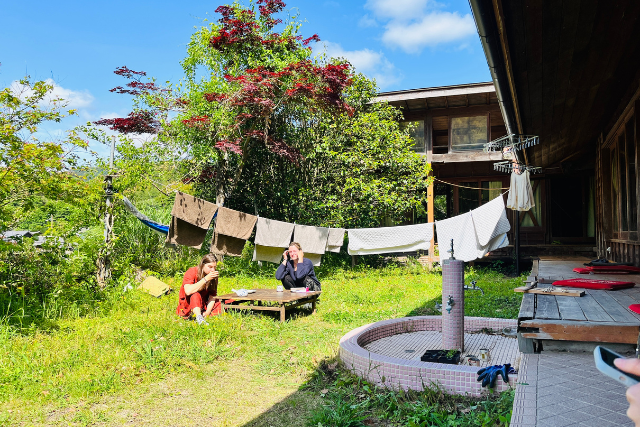
This is the exterior of the house. The two German volunteers dragged a table out onto the grass to enjoy the sun.
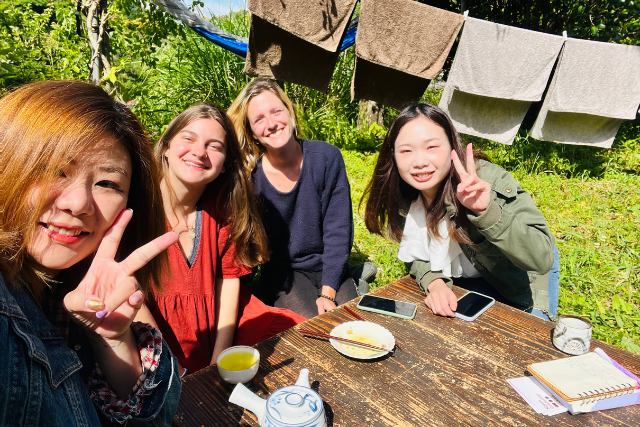
Before leaving, we took a commemorative photo. It has been two days of working hard together as farmers and carrying tea together. Jenny is staying until the end of May, and Lena for several more months. My friend and I returned to Tokyo to work.
To Close
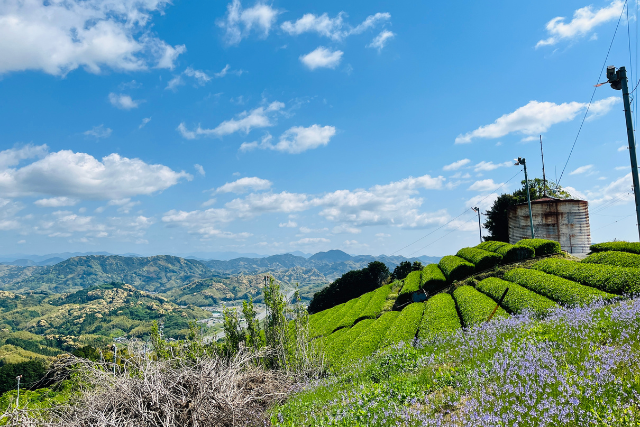
For anyone who is interested in visiting Japan to try new experiences. Along with learning about Japanese culture, we also recommend volunteering at a Japanese tea plantation. Become a Japanese tea farmer and stay at a guesthouse like us.
Those who are interested can contact NATURALITEA. Fill in the details of wanting to tour the tea plantation, home stay, and volunteer (like us). I can say that it is a very fun and new experience. Next year, if I don’t get attracted by anything else, I would like to come and pick tea again. Let’s come together!

 (2).png)
































